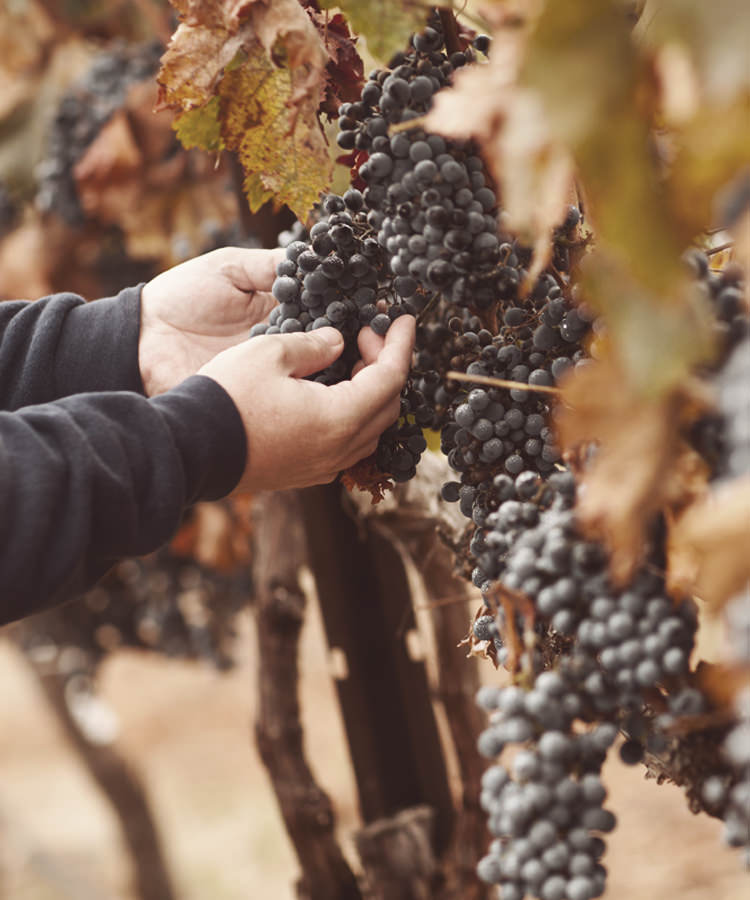Growing and harvesting more grapes means better wine, right? While no one would fault someone for having this belief, since the idea of more grapes seems it would mean there was a healthy and fertile growing season, which in turn should mean the grapes are delicious and therefore will make delicious wine, this is not quite true. Contrary to popular belief, having more grapes doesn’t actually make for better wine. In fact, the amount-of-fruit-to-quality-of-fruit ratio works just the opposite; fewer grapes mean a better-quality final product. Sounds strange, right? One would naturally think that higher amounts of grapes would come from more- opportune growing conditions, leading way to better tasting, higher-quality wine, though the inverse is actually true.
Many steps of winemaking work the opposite of what you’d think, starting with the soil. When it comes to grape-growing, winemakers actually want their soils to be less than fertile. Give the vine too-ideal growing conditions (that is, abundant amounts of water and flawless soil components) and the vine will over-perform. Force the vine to struggle too much and the plant will begin to die. Finding the perfect balance between too fertile and not fertile enough is the first step to optimal grape growing.
Grapes on a vine are measured in a term called “yields.” Believe it or not, lower- yielding vines produce higher-quality grapes. Each vine has a certain amount of nutrients to provide the fruit it bears. When a vine becomes too efficient and produces an abundance of fruit, the same amount of nutrients still remains in the vine. Therefore, a vine with many grape clusters on it will be forced to distribute its nutrients among a larger amount of fruit, leaving the quality of each individual grape mediocre at best. When lesser amounts of fruit are found on a vine, the same amount of nutrients has fewer grapes to disperse to, and can therefore power up each little berry to its healthy and juicy potential.
So how does one control the number of grapes his or her vine produces? Here’s where the concept of “throwing out your grapes makes for better wine” comes in. For winemakers who prefer quality over quantity,. a “green harvest” will be implemented. Green harvesting, known as vendange verte in French, involves cutting off immature or mediocre grape clusters before actual harvest; basically, this is a pre-harvest harvest. Once this green harvest is complete, remaining grape clusters not only ripen much faster, but develop into higher quality grapes more quickly, due to the immediate presence of extra nutrients available. This form of crop thinning is generally done around the time of veraison, when grapes turn from tiny hard green berries to riper, softer fruit.
On a recent trip to Sicily, I was able to see the benefits of dropping fruit firsthand. On a recent trip to Stemmari winery in southern Sicily, winemaker Lucio Matricardi took me up the island’s steep slopes in the winery’s 4 x 4. The hot summer sun beat down on the hillside, and while 105 degrees Fahrenheit wasn’t exactly ideal weather for me to be standing in, the evidence was clear that these were the perfect growing conditions for the estate’s Muscat grapes. Hot summer sun and the ideal amount of soil fertility were causing these grapes to flourish right before my eyes. Directly in front of us, rows of healthy green vines canopied down the hillsides, all bearing clusters of ripe, healthy fruit. But Sicily’s abundant sunshine and prime weather conditions didn’t produce clusters like this on their own; this is where the agricultural expertise of the winery’s agronomist, Daniele Giallo, and Lucio’s, came into play.
While sitting in the air-conditioned van, Lucio yelled for Daniele to pull over and he jumped out, disappearing into the rows of never-ending vines. He returned to the car, slightly out of breath, with two clusters in hand. In his left hand, Lucio held a big, healthy bunch of green grapes, so ripe that I actually began plucking the berries from their stems and snacking away in the car. In his right hand, he held a much smaller, less ripe bunch of grapes, which turned out to be the same variety from the same vine.
“This is what happens after the first green harvest,” Lucio explained. The evidence was right in front of me; thanks to the first vendange verte, clusters like the one in Lucio’s left hand began to rapidly flourish, concentrating nutrients and creating healthy fruit. But because the season wasn’t yet over, new clusters were also still forming on the vine, which threatened to take nutrients from the healthy clusters the vineyard team had worked hard to protect. Because of this, Lucio let me know a second green harvest would be implemented shortly for the sake of maintaining those higher-quality berries’ full potential before harvest. While dropping those clusters might seem like a waste to most people, for winemakers, it’s the best way to ensure a higher-quality berry and, therefore, a better wine.
